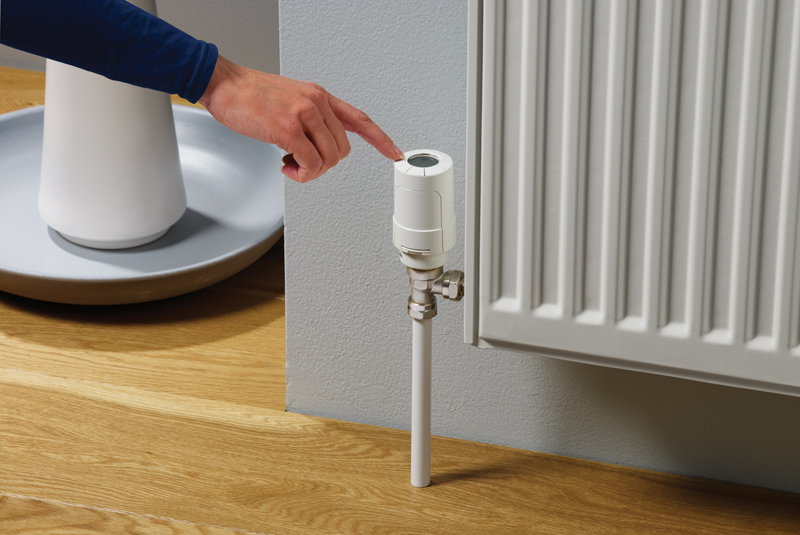
From phones to TVs, smart technology is everywhere so it’s not surprising that heating controls are following the trend. Bjorn Sejr Nielsen, Marketing Director at Danfoss, looks at the latest developments available to installers and their customers and what’s driving the next generation of controls.
For those who can afford it, and are comfortable using internet-based technology, so-called smart heating systems offer pinpoint control over domestic energy consumption and indoor comfort using an app. However, you don’t necessarily have to splash out on a flashy app-controlled system to save energy and money. Even what might be described as basic On/Off controls now have ‘smart’ features such as digital touch screen displays and micro-processor controlled programming for enhanced functionality and efficiency. Also, the wider use of wireless devices in the home is generating demand for wireless heating controls. Innovative battery-powered digital room thermostats require minimal wiring and cause no disruption to the building fabric, making them an increasingly popular choice with installers and end-users alike.
Energy savings
According to research conducted at Salford University’s Energy House, fitting just a few simple controls can have a big impact on heating bills. In fact, tests showed that installing one reference room thermostat and a full set of thermostatic radiator valves can reduce running costs by 40%. Now that’s a really ‘smart’ selling point for any installer. With this impressive energy saving potential, heating controls are recognised as one of the ‘big three’ measures, along with insulation and new boilers, for making a home more energy efficient. Installing modern heating controls – and using them correctly – will ensure that no heat is wasted by keeping some rooms warmer than they need to be. As a result the boiler operates more efficiently and uses less energy to maintain a comfortable temperature when and where required.
TRVs
There is an extensive choice of heating controls to meet the needs of different households, lifestyles and budgets. The key question is, which combination of controls will achieve optimum energy efficiency? Salford University’s research highlighted the importance of TRVs to provide independent temperature control in every room to ensure satisfactory heat distribution around a dwelling. Indeed, the research results showed that this is not achieved without TRVs, even if a system is balanced.
Room stats and programmers
In addition to TRVs to provide temperature control in each room, it’s essential to install a timer to set the overall on and off times. Current options range from dial and digital room thermostats to fully programmable products. The latter give more flexibility such as allowing householders to set different times for weekdays and weekends. Devices such as the Danfoss FP735i Programmer allow separate timings to be set for two heating zones and the hot water supply. Up to six changes a day can be set for each zone, so heat is directed only when and where it is needed. The most recent addition to our range, the TPOne programmable room thermostat, not only combines a room thermostat and programmer but also adds ease of use and even more functionality, including 7-day programming and timing for a hot water cylinder.

New technology
Manufacturers are constantly pushing the boundaries of new technology to improve their products in terms of energy efficiency, comfort and that all-important user interface. Our development teams are already working on the next generation of digital TRVs which can be programmed individually for total control over heating in each room of the house. A new central controller is also in the pipeline which, unlike some of the current smart systems, will enable householders to control the heat in each room via an internet app for optimum convenience and energy savings.
Smart future
Although smart technology has a role to play in future products, at Danfoss we don’t think it should be the main driver of new developments. Based on our experience, we firmly believe that the primary focus has to be on creating user-friendly heating controls that deliver energy savings for the majority of consumers and which are quick and simple to install. So whether it’s a high-tech heating app or a cost-effective combination of TRVs and a dial room thermostat, the message is clear – modern heating controls are one of the keys to keeping a home comfortably and affordably warm.












